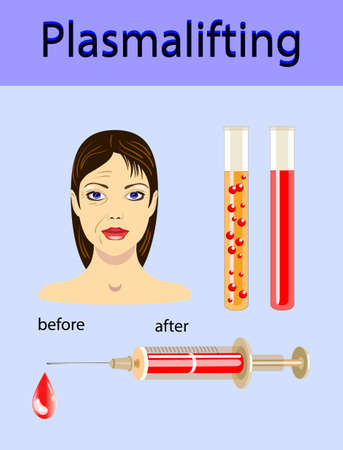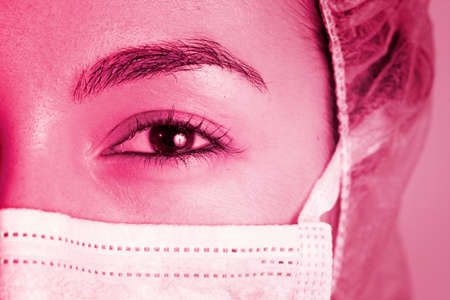Introduction: The Importance of Adverse Reaction Awareness in UK Cosmetic Clinics
In recent years, the popularity of cosmetic treatments has soared across the United Kingdom, with an increasing number of individuals seeking non-surgical enhancements in both urban and rural settings. This surge has brought about a heightened responsibility for practitioners operating within British cosmetic clinics. Recognising and managing adverse reactions is no longer just a matter of professional diligence; it is a fundamental aspect of patient safety and ethical practice that aligns closely with UK regulatory expectations. With the Care Quality Commission (CQC) and other governing bodies placing emphasis on patient welfare, practitioners are expected to demonstrate robust awareness and proactive management of complications. In the British context, this means not only understanding the typical range of adverse events associated with common procedures, but also maintaining transparent communication with patients and adhering to best-practice protocols tailored to local guidelines. Ultimately, effective recognition and management of adverse reactions foster trust between clinic staff and clients, underpinning the reputation and credibility of cosmetic services throughout the UK.
2. Common Adverse Reactions Seen in British Cosmetic Practice
Within UK cosmetic clinics, practitioners regularly encounter a core set of adverse reactions associated with popular aesthetic treatments such as dermal fillers, botulinum toxin injectables, and a range of skin procedures. Understanding the frequency and nature of these events is fundamental for safe practice and effective patient communication.
Adverse Events by Treatment Type
| Treatment | Common Adverse Reactions | Estimated Frequency |
|---|---|---|
| Dermal Fillers | Bruising, swelling, tenderness, lumps/bumps, vascular occlusion (rare), delayed hypersensitivity | Moderate; serious complications rare but significant when they occur |
| Botulinum Toxin Injectables | Bruising at injection site, headache, ptosis (eyelid droop), asymmetry, dry eyes/mouth | Mild to moderate; most are transient and self-limiting |
| Chemical Peels/Microneedling/Lasers | Erythema (redness), irritation, pigmentation changes (hyper/hypo), scarring (rare), infection | Mild to moderate; risk increases with deeper procedures or improper technique |
British Context: Patterns and Patient Expectations
In the UK context, patients often expect a high standard of safety and transparency. Minor reactions like bruising or redness are generally accepted when clearly explained pre-procedure. However, more severe complications—such as vascular occlusion from fillers or persistent pigmentary changes after skin procedures—demand rapid recognition and intervention. The British regulatory landscape also influences practice, requiring robust consent processes that outline both common and rare risks.
The Role of Aftercare in Managing Reactions
A key aspect unique to British clinics is the emphasis on accessible aftercare. Patients are encouraged to report unexpected symptoms early. Clinicians commonly provide written aftercare instructions tailored to each procedure, which reinforces patient safety and supports best outcomes.

3. Early Recognition: Signs and Symptoms to Watch For
Timely identification of adverse reactions in cosmetic clinics is crucial for ensuring patient safety and maintaining professional standards. In the British context, practitioners must be attuned to both classic and more nuanced signs that may indicate a developing issue. While some reactions are immediately apparent, others can be subtle and easily overlooked, particularly when patients may understate their symptoms out of politeness or concern about making a fuss—a behaviour not uncommon in British culture.
Classic Indicators of Adverse Reactions
The most common warning signs following cosmetic procedures include pronounced swelling, persistent redness, excessive bruising, and severe pain that does not subside as expected. For example, extensive oedema or erythema beyond the usual post-procedure window should prompt further investigation. Blanching of the skin, especially if accompanied by discomfort, can signal vascular compromise and requires immediate attention. Practitioners should also be alert to unexpected lumps or nodules forming under the skin, which might suggest granuloma formation or infection.
Subtle Symptoms That Should Not Be Overlooked
Adverse reactions do not always present dramatically. Patients may report a sense of tightness, tingling, or unusual warmth at the treatment site—sensations that could precede more severe complications. Delayed hypersensitivity reactions may manifest as mild rashes or itching several days after a procedure. In rare cases, systemic symptoms such as malaise or low-grade fever warrant careful assessment for possible infection or allergic response.
Culturally Appropriate Communication with Patients
Effective management begins with open dialogue. When discussing potential side effects with patients, it is important to use clear yet sensitive language. In British practice, phrases like “Do let us know if anything feels out of the ordinary” or “If you notice anything that doesn’t seem quite right, please don’t hesitate to get in touch” encourage honest feedback without alarming the patient unnecessarily. Avoid overly technical jargon; instead, use accessible terms such as “bruising,” “swelling,” or “discomfort.” Additionally, acknowledge patients’ concerns respectfully—statements like “It’s perfectly reasonable to check in if you’re unsure” help foster trust and reassure patients that their wellbeing is your priority.
Practical Steps for Clinic Teams
All clinic staff should be trained to recognise early warning signs and empowered to escalate concerns promptly. Encourage a culture where team members feel comfortable voicing doubts—even those that may seem minor at first glance. Maintain thorough records of any reported symptoms or observations to support ongoing patient care and facilitate seamless communication between practitioners.
4. Immediate Management and Escalation Pathways
In the UK, cosmetic clinics must be prepared to recognise and act swiftly when faced with adverse reactions. Following NHS guidance and local clinical protocols, practitioners can ensure patient safety and regulatory compliance. Below is a structured step-by-step approach for handling adverse events commonly encountered in British cosmetic settings.
Step-by-Step Response to Adverse Events
- Recognise and Assess: Promptly identify the signs and symptoms of an adverse reaction. Use established NHS criteria to determine severity (mild, moderate, severe).
- Ensure Immediate Safety: Stop the procedure immediately. Assess airway, breathing, and circulation (ABC) in line with NHS Basic Life Support protocols if required.
- Initial Intervention: Provide first aid as indicated (e.g., cold compress for swelling, antihistamines for mild allergic reactions). Document all interventions carefully in accordance with CQC requirements.
- Escalate Appropriately: For moderate or severe reactions (such as anaphylaxis or vascular compromise), activate emergency escalation pathways:
- Call 999 for life-threatening emergencies.
- Contact local on-call medical support if available within the clinic network.
- Monitor and Reassure: Continuously monitor vital signs and patient comfort while awaiting further help. Provide reassurance, using clear explanations in plain English to reduce patient anxiety.
- Record and Report: Complete detailed incident reports as per local protocol. Notify relevant authorities (e.g., MHRA Yellow Card scheme for medication/device-related incidents).
NHS Guidance Reference Table
| Reaction Type | Immediate Action | Escalation Protocol | Documentation Requirement |
|---|---|---|---|
| Mild Allergic Reaction | Administer oral antihistamine; observe | If no improvement, escalate to GP/urgent care | NHS incident report; inform patient’s GP if necessary |
| Anaphylaxis | Epinephrine auto-injector; ABC assessment | Call 999; inform on-site clinical lead | NHS critical incident form; report to MHRA |
| Vascular Compromise (e.g., filler) | Apply hyaluronidase if trained; massage area | Urgent referral to A&E/plastic surgery team | CQC documentation; follow up with secondary care summary |
| Infection/Abscess | Start empirical antibiotics if indicated | Liaise with local microbiology/infectious diseases team | NHS infection control report; update care records |
The Importance of Team Communication and Review
A culture of open communication within the clinic team is essential. After managing any adverse event, conduct a debriefing session in line with NHS ‘learning from incidents’ guidance. This promotes continuous improvement and ensures all staff are familiar with updated protocols relevant to UK cosmetic practice.
5. Collaboration with NHS and Regulatory Reporting
In the context of British cosmetic clinics, effective collaboration with the NHS and adherence to regulatory reporting is not just a legal obligation but also a critical aspect of patient safety. Understanding when and how to escalate adverse reactions to the appropriate NHS services can make a significant difference in patient outcomes. In this section, we outline practical steps for recognising escalation thresholds and fulfilling your responsibilities to UK regulatory bodies.
When to Involve the NHS
Adverse reactions vary in severity, and not all require immediate NHS intervention. However, practitioners must be vigilant for signs that warrant urgent referral, such as severe allergic reactions (anaphylaxis), rapidly progressing infections (cellulitis or necrotising fasciitis), or systemic symptoms like fever, hypotension, or breathing difficulties. When these occur, dialling 999 or directing patients to A&E is essential. For less acute concerns—such as delayed hypersensitivity reactions or persistent swelling—GP involvement may be appropriate. It is crucial to document all communications and decisions regarding escalation for medico-legal clarity.
Reporting Requirements: MHRA and Beyond
The Medicines and Healthcare products Regulatory Agency (MHRA) oversees the safety of medicines, medical devices, and blood components for transfusion in the UK. All suspected adverse reactions related to licensed medicines (including dermal fillers containing lidocaine) or devices should be reported via the Yellow Card Scheme. This applies whether you are certain of causality or simply suspect a link. Reporting helps build national data on product safety, which benefits the wider community of practitioners and patients alike.
How to Report to the MHRA
Reports can be submitted online through the Yellow Card website (yellowcard.mhra.gov.uk). The process involves providing details about the patient (without personal identifiers), the suspected product, description of the reaction, and any actions taken. Timeliness is key—reports should be made as soon as possible after identifying an adverse event.
Other Regulatory Obligations
For practitioners registered with professional bodies such as the General Medical Council (GMC), Nursing and Midwifery Council (NMC), or General Dental Council (GDC), there are additional requirements for maintaining records and sometimes notifying your professional regulator if a serious incident occurs. Ensure you are familiar with your specific body’s guidance on adverse event management.
Practical Tips for Clinics
– Maintain clear protocols outlining when to involve NHS services.
– Train staff regularly on recognising severe reactions.
– Have up-to-date contact information for local emergency departments.
– Familiarise all clinicians with MHRA reporting processes.
– Store documentation securely in line with GDPR requirements.
By integrating these practices into routine clinic operations, cosmetic practitioners uphold both their duty of care to patients and their responsibilities within the British healthcare system.
6. Preventative Strategies and Patient Education in the UK Setting
Best Practices for Minimising Adverse Events
In British cosmetic clinics, prevention is a cornerstone of safe and effective practice. Rigorous adherence to clinical protocols, including thorough patient assessment and meticulous record-keeping, forms the basis for minimising adverse reactions. Clinics should ensure that all practitioners are up-to-date with relevant training and familiar with the latest guidance from regulatory bodies such as the General Medical Council (GMC) and the Care Quality Commission (CQC). Utilising patch tests where appropriate, double-checking product expiry dates, and maintaining a sterile environment are all essential steps. Furthermore, having a robust incident reporting system encourages continuous learning and improvement within the clinic team.
Empowering Patients Through Pre-Procedure Counselling
Pre-procedure counselling is especially valued by patients in the UK, who often expect clear, honest communication. During consultations, practitioners should provide comprehensive information about potential risks, expected outcomes, and aftercare requirements. It is best practice to use plain English, avoiding technical jargon, and to offer written materials for patients to take home. Discussing past medical history—including allergies, previous cosmetic procedures, and any medications—is crucial for tailoring treatment plans and pre-empting complications. This open dialogue builds trust and empowers patients to make informed decisions about their care.
Tailoring Advice for the British Public
The British public tends to appreciate a pragmatic approach: practitioners should address common concerns such as swelling or bruising by giving realistic expectations based on local experiences. Highlighting the importance of following aftercare advice—such as avoiding alcohol immediately post-procedure or limiting sun exposure—resonates well when explained in relatable terms. Providing reassurance regarding NHS support in the rare event of severe complications also helps alleviate anxiety. Lastly, always encourage patients to contact the clinic promptly if they notice anything unusual; this fosters a culture of safety and shared responsibility.
Summary
By integrating best practices in preventative care with tailored patient education, British cosmetic clinics can significantly reduce adverse events while enhancing patient satisfaction and safety. Empowering patients through transparent communication not only meets regulatory standards but also aligns with cultural expectations in the UK context.


